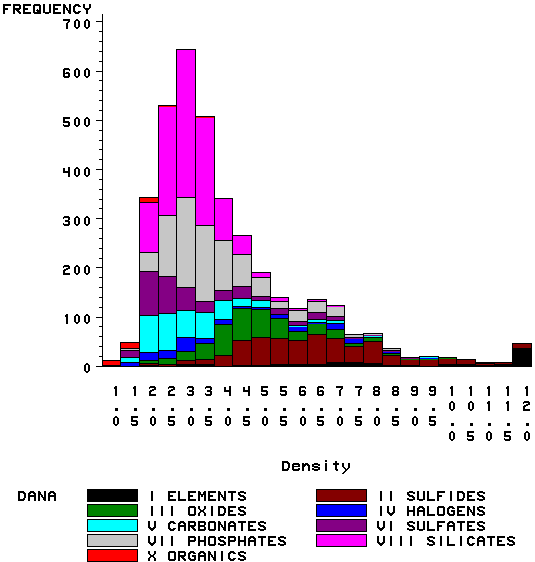Density of Minerals (original) (raw)
Definition
Density (or Specific Gravity) is a very important property of minerals. The calculation is fairly simple - weight/volume. It is measured using various apparatus and techniques which are covered in most mineralogy textbooks. These are:
- Jolly Balance
- Beam Balance
- Pycnometer
- Heavy Liquids
Of these methods, the jolly and beam balance methods are best suited for mineral specimen work. The apparatus to do these measurements are simple and can be inexpensively constructed (Sinkankas, 1966).
Density=(weight in air)/(weight in air - weight in water).
The pycnometer and heavy liquids are best suited for the density measurement of fine or very small particles.
The mineralogy database has placed all the density information in the following tables:
Non-metallic minerals by density
Histogram of Mineral Density and Dana Classification
Here is the measured density data in the mineralogy database compared to the Dana Classification. As a rule, organics, carbonates, and sulfates are light; oxides, sulfides, and elements are heavy; silicates and phosphates are in between.

Other References to Mineral Density
Search the Mineralogy Database
Example Subject Searches
Example: "density-7"" for all minerals with a measured density of 7 to 7.99.
Example: "den-calc-7"" for all minerals with a calculated density of 7 to 7.99.
Example: "density-2.6*"" for all minerals with a measured density of 2.6 to 2.69.